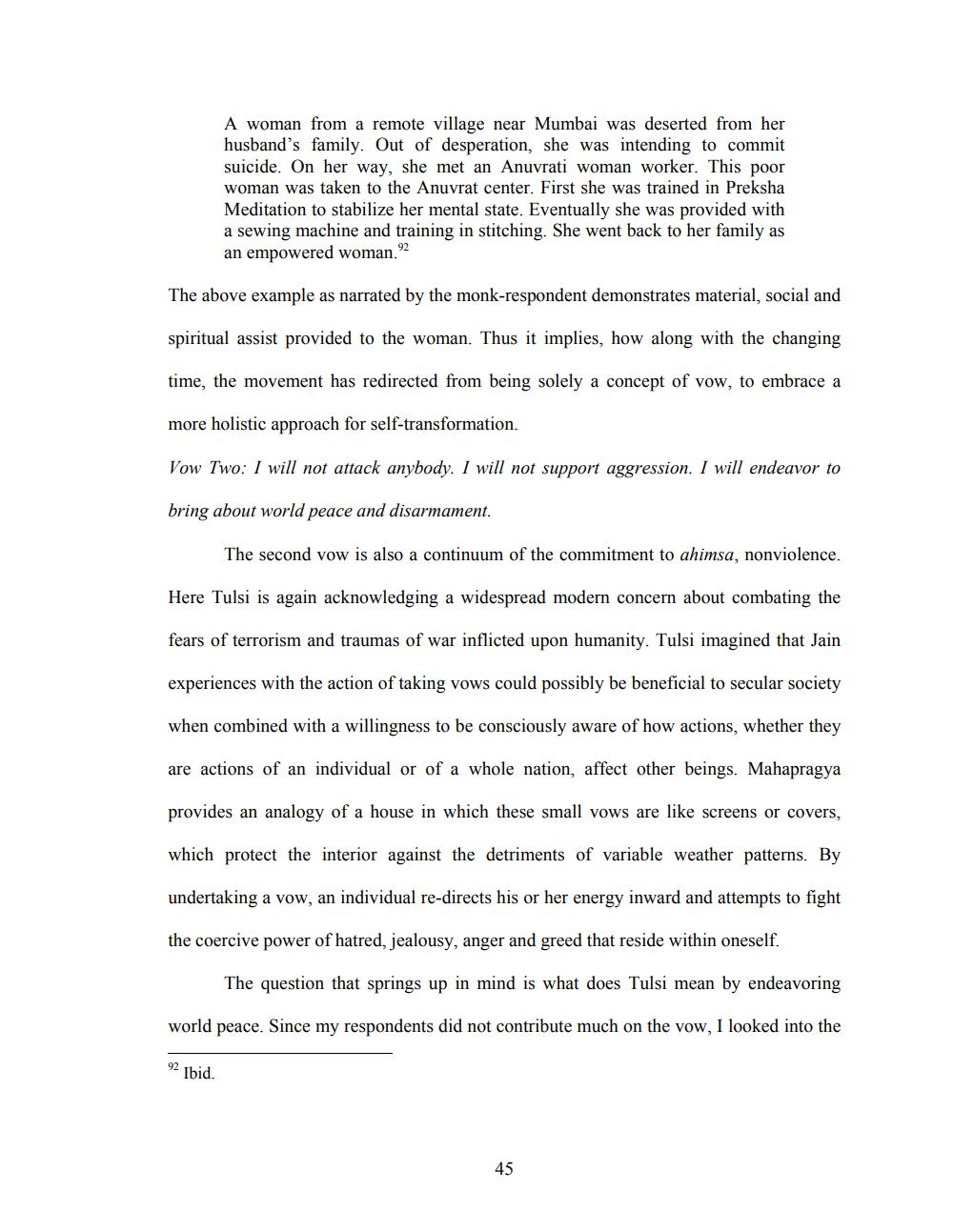________________
A woman from a remote village near Mumbai was deserted from her husband's family. Out of desperation, she was intending to commit suicide. On her way, she met an Anuvrati woman worker. This poor woman was taken to the Anuvrat center. First she was trained in Preksha Meditation to stabilize her mental state. Eventually she was provided with a sewing machine and training in stitching. She went back to her family as an empowered woman.92
The above example as narrated by the monk-respondent demonstrates material, social and
spiritual assist provided to the woman. Thus it implies, how along with the changing
time, the movement has redirected from being solely a concept of vow, to embrace a
more holistic approach for self-transformation.
Vow Two: I will not attack anybody. I will not support aggression. I will endeavor to
bring about world peace and disarmament.
The second vow is also a continuum of the commitment to ahimsa, nonviolence.
Here Tulsi is again acknowledging a widespread modern concern about combating the
fears of terrorism and traumas of war inflicted upon humanity. Tulsi imagined that Jain
experiences with the action of taking vows could possibly be beneficial to secular society
when combined with a willingness to be consciously aware of how actions, whether they
are actions of an individual or of a whole nation, affect other beings. Mahapragya
provides an analogy of a house in which these small vows are like screens or covers,
which protect the interior against the detriments of variable weather patterns. By
undertaking a vow, an individual re-directs his or her energy inward and attempts to fight
the coercive power of hatred, jealousy, anger and greed that reside within oneself.
The question that springs up in mind is what does Tulsi mean by endeavoring
world peace. Since my respondents did not contribute much on the vow, I looked into the
92 Ibid.
45




